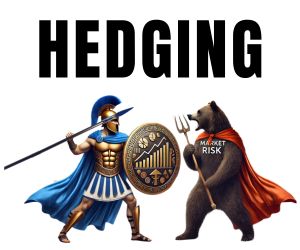PARITY CONCEPTS AND THEIR ROLE IN FOREX
Parity is the idea of equality—a one-to-one relationship that sets a clear benchmark in pricing. In foreign exchange, parity shows up in many forms: currencies trading at equal value, theories linking inflation and exchange rates, or models comparing interest differentials. Traders watch parity because it can signal balance, mispricing, or turning points in the market. In this article, we break down the basics of parity, explain how it appears in exchange rate mechanics, and show how traders incorporate it into their strategies.

Parity Basics
Parity, in its simplest form, means equality. In finance, the term is used to describe situations where two values line up precisely—whether it is the face value of a bond and its market price, or an exchange rate that reflects one-to-one equivalence. In the world of foreign exchange, parity carries both technical and symbolic weight. Traders use the concept to frame fair value, economists deploy it in theories of price stability, and market participants watch parity levels for the psychological effect they carry in trading behaviour.
From Mathematics to Markets
The term “parity” originates in mathematics and accounting, where it literally means equality between two values. Finance adopted the concept early on, applying it to bonds trading at their face value (parity with par), options relationships (put–call parity), and exchange rates. In each case, parity creates a benchmark: if the relationship holds, markets are in balance; if it does not, arbitrage or risk forces will eventually restore equilibrium. Traders thus use parity as a guidepost in a market otherwise dominated by constant fluctuation.
Psychological Impact of Parity in FX
In currency markets, parity is more than just a number—it is a psychological threshold. When EUR/USD approached 1.00 in 2022, headlines worldwide highlighted the prospect of “parity.” The level attracted huge trading volumes, not because of its fundamental significance, but because of its symbolic meaning. Traders clustered orders around parity, volatility spiked, and the market treated the level as a test of euro credibility. Similar stories emerge in USD/CHF, GBP/USD, or USD/CAD whenever round-number parity levels approach. The basic idea of equality resonates with participants, creating a self-fulfilling impact in the market.
Different Types of Parity in Economics
Economists use parity in more formal contexts. Purchasing Power Parity (PPP) suggests that exchange rates should adjust to equalise the cost of identical goods across countries. Interest Rate Parity (IRP) proposes that forward rates should reflect differences in interest rates between two currencies. Covered and uncovered versions of these theories serve as building blocks in international finance, offering a way to link domestic economic variables to exchange rate expectations. While in practice these relationships rarely hold perfectly, they provide a framework for evaluating currency misalignments and guiding long-term views.
Why Parity Matters for Traders
For active traders, parity matters because it influences both behaviour and valuation. At a psychological level, parity levels often mark battlegrounds between bulls and bears. At an analytical level, parity theories shape expectations about whether a currency is overvalued or undervalued. Knowing that PPP suggests the euro is undervalued by 15% against the dollar, for example, may not predict tomorrow’s price action but it informs long-term positioning. Parity thus works as a lens through which traders interpret movements, separate noise from fundamentals, and refine their strategies.
Parity in Rates
One of the most practical ways parity appears in Forex is through interest rate relationships. Traders and institutions constantly compare yields across countries, and parity provides a theoretical link between those yields and exchange rates. If the relationship holds, markets are in balance; if it does not, arbitrage opportunities or risks may emerge. Understanding rate parity helps explain why forward markets price currency pairs the way they do, and why deviations are watched closely by analysts, hedge funds, and central banks.
Interest Rate Parity Explained
Interest Rate Parity (IRP) is a cornerstone of international finance. It states that the difference between interest rates in two countries should equal the difference between the forward exchange rate and the spot exchange rate. Put simply, if U.S. interest rates are higher than European rates, the forward price of the euro should trade at a discount to the spot price. This ensures that investors cannot lock in risk-free profits simply by borrowing in one currency, investing in another, and hedging the exchange rate. When IRP holds, markets are in equilibrium; when it does not, capital flows or speculative trades tend to restore balance.
Covered vs. Uncovered Parity
Covered Interest Rate Parity (CIRP) applies when forward contracts are used to eliminate currency risk. Investors can borrow in one currency, invest in another, and use a forward to lock in the future exchange rate. If the forward price matches the interest rate differential, no arbitrage is possible. Uncovered Interest Rate Parity (UIP), by contrast, assumes no forward cover. It suggests that currencies with higher interest rates should depreciate over time to offset the yield advantage. While UIP often fails empirically, it remains a useful guide for thinking about risk premiums and expected returns in Forex markets.
Purchasing Power Parity (PPP)
PPP is another form of parity applied to exchange rates. It argues that in the long run, exchange rates should adjust so that identical goods cost the same in different countries. If a hamburger costs $5 in New York but the equivalent of $4 in Paris, PPP suggests that the euro is undervalued relative to the dollar. While short-term factors like capital flows, speculation, and policy can drive currencies away from PPP, many investors use it to gauge long-term fair value. The Economist’s “Big Mac Index” is a famous, if light-hearted, application of PPP that illustrates how currencies deviate from parity in real life.
Real-World Applications
For traders, parity in rates provides practical tools. Forward points in FX quotes are derived directly from interest rate differentials. When U.S. rates rise relative to Japanese rates, USD/JPY forward contracts adjust to reflect this gap. Corporations planning cross-border transactions rely on IRP to price hedges and budget exposures. Hedge funds watch deviations from parity for potential arbitrage trades. Even retail traders indirectly deal with parity, as swap charges and rollovers in Forex accounts reflect the same underlying rate differentials.
Limitations and Breakdowns
Parity conditions, while elegant in theory, are not always perfect in practice. Market frictions, capital controls, and transaction costs can prevent arbitrage from restoring balance. During crises, investors may accept negative carry simply to hold a safe-haven currency, causing UIP to break down. Covered parity is usually tighter but can still wobble when funding markets freeze—as seen during the 2008 financial crisis when cross-currency basis swaps showed large deviations. Traders must therefore treat parity not as a law but as a guideline, valuable for context but subject to real-world complications.
Trading with Parity
Parity is not just a theoretical construct—it is a practical tool that traders use to frame strategies, spot opportunities, and manage risk. Whether it is watching psychological levels in major pairs, interpreting PPP deviations, or monitoring interest-rate parity in forwards, parity concepts shape how market participants act. This section focuses on how traders engage with parity in real-world settings, from day-to-day execution to longer-term positioning.
Psychological Trading Levels
Perhaps the most visible role of parity is in psychological levels like EUR/USD at 1.00 or USD/CHF at 1.00. These round numbers attract headlines, retail flows, and institutional interest alike. Order books often show clustering at parity—stop losses, take-profits, and large options all accumulate around the level. For traders, this makes parity zones hotspots of volatility and liquidity. Breaks through parity often trigger cascades of orders, while failed attempts can mark turning points. Recognising these dynamics allows traders to anticipate price behaviour and plan risk management around critical thresholds.
Long-Term Value with PPP
Parity also informs longer-term strategies. Purchasing Power Parity (PPP) estimates are frequently used by asset managers to judge whether a currency is undervalued or overvalued. For example, if PPP suggests fair value for GBP/USD is 1.40 but the market trades at 1.20, investors may take a strategic long view, even if short-term flows point otherwise. PPP provides a compass for value-based investing, anchoring expectations in fundamentals rather than noise. Traders who align technical setups with PPP signals often gain an extra layer of conviction.
Forward Pricing and Carry
Forward contracts are priced directly from interest rate parity. Traders who roll positions overnight see the effect of this in swap rates or rollover costs on their accounts. A long position in a high-yielding currency against a low-yielding one generates positive carry if parity relationships hold. Conversely, being on the wrong side of a rate differential means paying the carry. Understanding parity here is not optional—it is embedded in the mechanics of every forward and swap transaction in Forex.
Arbitrage and Deviations
When markets deviate from parity conditions, arbitrage opportunities can appear. Covered interest rate parity usually holds, but in moments of stress—such as during the 2008 financial crisis—deviations widened enough for hedge funds and banks to exploit. Spotting such anomalies requires sophisticated infrastructure, but even retail traders can benefit from recognising when markets are out of balance. Large deviations often warn of funding stress, liquidity shortages, or capital controls—all of which affect currency performance beyond the arbitrage itself.
Risk Management with Parity
Parity also helps frame risk. Traders often define stop-loss or profit targets around parity levels, knowing liquidity will spike there. Analysts use PPP to temper enthusiasm when currencies trade far from their fair-value range. Fund managers compare carry trades against uncovered interest parity to judge whether the extra yield justifies the risk. In each case, parity provides a lens to interpret the balance—or imbalance—of forces in the market. Incorporating parity into risk frameworks ensures positions are contextualised within a broader equilibrium view.
Practical Takeaways
For traders, the lesson is clear: parity matters. It might not predict exact price levels tomorrow, but it shapes the terrain on which markets move. Psychological parity levels dictate behaviour, PPP informs long-term bias, and interest-rate parity defines forward pricing. Successful strategies acknowledge these influences, blending them with technicals and macro themes. By understanding and applying parity in its many forms, traders can better anticipate flows, spot risks, and refine their edge in the world’s most liquid market.







